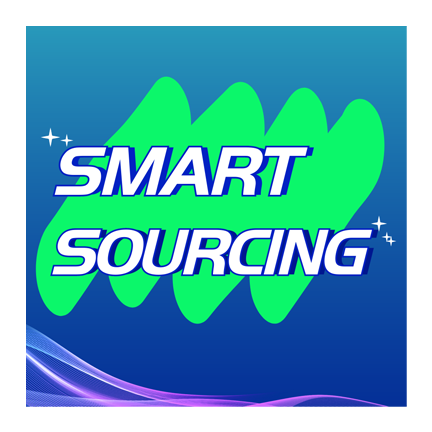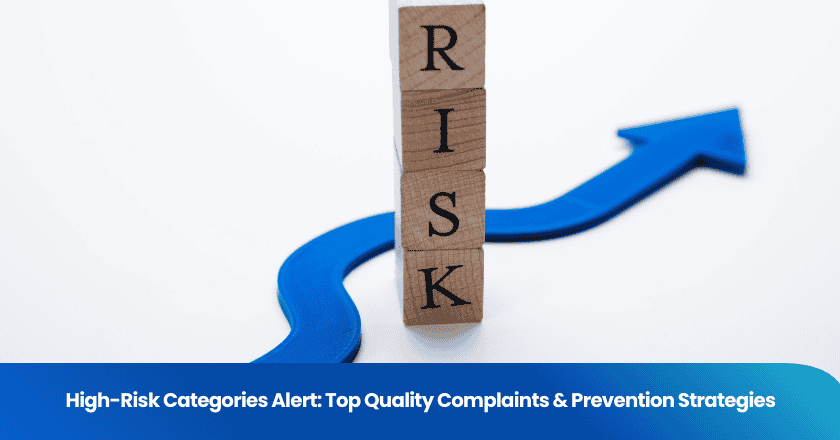
What is direct sourcing? How does it develop?
Direct sourcing, also known as single-source procurement, refers to the buyer purchasing directly from the producer of goods or services, without facilitating the transaction through any intermediaries (such as wholesalers, retailers, agents, etc.).
In the procurement process, direct sourcing emphasizes the establishment of direct and long-term cooperative relationships with suppliers to obtain higher-quality products or services and reduce procurement costs.
The direct sourcing method is widely used in government procurement and corporate procurement, especially for special situations such as patented products, initial creation, contract additions, subsequent expansion of existing procurement projects, and unforeseen emergencies.
Direct sourcing, as a procurement model, can be traced back to early commercial trading activities.
However, with the development of the market economy and the standardization of procurement management, direct sourcing is gradually being endowed with more connotations and meanings.
Before the 20th century, due to the limitations of infrastructure such as transportation and communication, direct sourcing was often constrained by geography and time.
After entering the 20th century, with the advancement of technology and the development of globalization, direct sourcing gradually became an important procurement strategy and was widely applied in various industries and fields.
The benefits of direct sourcing
Direct sourcing has significant advantages in terms of cost-effectiveness. Firstly, by reducing intermediaries, direct sourcing can lower procurement costs. As the fees of middlemen are eliminated, enterprises can obtain more competitive procurement prices. Secondly, long-term stable direct sourcing relationships help enterprises obtain preferential offers and discounts from suppliers, further reducing procurement costs. Additionally, direct sourcing aids enterprises in optimizing inventory management, reducing inventory backlog and waste, and improving capital turnover. A close partnership facilitates enterprises to better understand suppliers' production capacity, quality control systems, and technological innovation capabilities, ensuring that the purchased products or services meet the needs of the enterprise.
At the same time, direct sourcing also enhances the transparency of the procurement process, helps enterprises establish a fair, just, and open procurement environment, and prevents the occurrence of corruption and unfair competition.
Direct sourcing platform
A direct sourcing platform refers to an online platform that utilizes Internet plus and e-commerce technology to provide direct sourcing services for enterprises.
These platforms help enterprises achieve direct connection with suppliers by integrating procurement processes, supplier management, order processing, and other functions, improving procurement efficiency and reducing procurement costs.
The direct sourcing platform plays an increasingly important role in modern enterprise procurement management, becoming a key tool for enterprises to optimize their supply chain and enhance their competitiveness.
The main features of the direct sourcing platform
1. Efficient and Transparent: The direct sourcing platform achieves transparency and openness in the procurement process through open bidding, competitive procurement, and other modes, improving procurement efficiency while effectively preventing the occurrence of corruption.
2. Cost reduction: The platform can simplify the procurement process, reduce intermediaries, and lower the procurement costs for enterprises. At the same time, through centralized procurement and bulk procurement, further price advantages can be obtained.
3. Optimize supply chain: Assist enterprises in establishing a stable supplier network, optimizing the supply chain structure, and enhancing the stability and reliability of procurement. Through data analysis, the platform can also provide enterprises with supplier performance evaluation and risk management support.
4. Intelligence: With the help of advanced technologies such as artificial intelligence and big data, the direct sourcing platform can achieve automation and intelligence in the procurement process. Through intelligent matching, automatic screening, and other functions, it can improve procurement efficiency and reduce the workload of procurement personnel.

Click the image to learn more
How does the platform facilitate direct sourcing
Automation and Artificial Intelligence
The platform utilizes algorithms and big data analysis capabilities to intelligently match the procurement needs of enterprises with the product information of suppliers, thereby improving procurement efficiency. Through automatic screening and evaluation of supplier data such as qualifications, performance, and reputation, it provides enterprises with high-quality supplier selection. Based on historical data and market trends, it conducts predictive analysis and provides procurement recommendations and risk management solutions for enterprises.
User experience
The platform adopts a simple and clear interface design, facilitating users' quick start and operation. It provides a variety of procurement management tools and functions, such as online inquiry, price comparison, placing orders, payment, etc., to meet the diverse procurement needs of enterprises. It offers professional customer service teams and technical support to promptly solve problems and difficulties encountered by users during use.
Through measures such as automation, intelligence, and user experience optimization, the direct sourcing platform provides enterprises with more convenient, efficient, and reliable procurement services, promoting direct cooperation and win-win development between enterprises and suppliers.
Implement direct sourcing in the organization
Implementing direct sourcing in an organization is a process that involves multiple steps and considerations.
The following are the main steps of implementing a direct sourcing platform, potential challenges and their solutions, as well as some best practices.
Implementation steps
1. Evaluate requirements
Firstly, the organization needs to clarify the objectives of direct sourcing, including reducing costs, improving efficiency, ensuring quality, etc. Conduct a comprehensive analysis of the current procurement process, cost structure, supplier relationships, etc., to determine the feasibility and potential benefits of direct sourcing. Based on the analysis results, list the commodities or services that need to be directly sourced, and specify the procurement quantity and specification requirements.
2. Choose the appropriate direct sourcing platform
Conduct research on the direct sourcing platforms in the market to understand the functions, services, fees, user evaluations, and other information of each platform. Based on the organization's needs and budget, evaluate the applicability of each platform, including the platform's stability, ease of use, security, and integration capabilities with the organization's existing systems. Taking into account various factors, select the most suitable direct sourcing platform for the organization, and negotiate and sign a contract with the platform provider.
Challenges and Solutions
Common obstacles
- Information asymmetry: The supplier information is not transparent, making it difficult to find a suitable supplier.
- Difficulty in negotiation: Direct negotiations with suppliers may face disagreements in terms of price, quality, delivery time, etc.
- Complex process: Direct sourcing may involve multiple departments and approval processes, making the process complex and time-consuming.
Solution
- Establish a supplier information database: Collect supplier information through market research, industry recommendations, participating in exhibitions, etc., and establish a supplier information database to facilitate the quick finding of suitable suppliers.
- Strengthen communication and negotiation: Establish long-term partnerships with suppliers, enhance communication and negotiation, and jointly address issues related to price, quality, delivery time, etc. At the same time, third-party evaluation agencies can be introduced to objectively assess suppliers.
- Simplify the procurement process: Utilize the direct sourcing platform to achieve automation and standardization of the procurement process, reduce approval steps and human intervention, and improve procurement efficiency. At the same time, establish a cross-departmental collaboration mechanism to ensure the smooth progress of the procurement process.
Best Practices
1. Establish a unified procurement standard: Develop unified procurement standards and processes to ensure the standardization and consistency of procurement activities.
2. Strengthen supplier relationship management: Establish long-term stable cooperative relationships with suppliers, enhance supplier relationship management, and improve supplier loyalty and cooperation.
3. Introduce a competition mechanism: Under the premise of complying with laws and regulations, introduce a competition mechanism to encourage healthy competition among suppliers, in order to obtain more favorable prices and higher-quality services.
4. Utilize data analysis to optimize procurement decisions: Use the data analysis tools provided by the direct sourcing platform to conduct in-depth exploration and analysis of procurement data, optimizing procurement decisions and strategy formulation.
5. Focus on risk management and compliance: During the direct sourcing process, focus on risk management and compliance review to ensure the legality and safety of procurement activities.
Through the implementation of the above steps and best practices, organizations can more effectively advance direct sourcing work, reduce costs, improve efficiency, ensure quality, and strengthen cooperative relationships with suppliers.
Comparison of direct sourcing and supplier management systems
Differences in methods
Direct Sourcing:
Definition: Direct sourcing refers to enterprises purchasing directly from the producers of goods or services without going through intermediaries. It emphasizes establishing direct, long-term partnerships with suppliers to obtain high-quality, low-cost products or services.
Process: Direct sourcing usually involves steps such as clarifying the demand, selecting suppliers, negotiating, signing contracts, and executing purchase orders. This process is relatively simple, reduces intermediate links, and improves procurement efficiency.
Features: Direct sourcing has advantages such as high cost-effectiveness, short procurement cycle, and fast information feedback, especially suitable for situations where there are strict requirements for product quality and large procurement volumes.
Supplier Management System:
A direct sourcing platform for suppliers:
Definition: The supplier management system is an integrated software solution designed to assist enterprises in comprehensively managing supplier information, purchase orders, inventory, contracts, and other procurement-related activities. It achieves automation and intelligence in the procurement process through comprehensive evaluation and classification of suppliers.
Process: The supplier management system covers the entire lifecycle management of supplier access, evaluation, selection, cooperation, and performance monitoring. It utilizes automation and intelligent technology to optimize the procurement process and improve procurement efficiency and quality.
Features: The supplier management system can automate many tedious procurement processes, improve procurement transparency, and reduce procurement costs. At the same time, it can also help enterprises establish a stable supplier network, enhancing the reliability and flexibility of the supply chain.
The advantages of direct sourcing platform
1. Cost-effectiveness: Direct sourcing reduces intermediaries and transaction costs, helping enterprises obtain more favorable prices and higher cost-effectiveness.
2. Procurement efficiency: Due to the relatively simple procurement process, direct sourcing can shorten the procurement cycle and improve procurement efficiency.
3. Quality Control: Establishing a direct sourcing relationship with suppliers helps enterprises better monitor product quality and ensure that the purchased products meet corporate requirements.
4. Long-term cooperation: Direct sourcing is conducive to enterprises establishing long-term stable cooperative relationships with suppliers, jointly responding to market changes and challenges.
Lessons learned from experience
Direct Sourcing: Although direct sourcing has many advantages, enterprises need to pay attention to supplier selection and risk management during implementation. Avoid supply risks caused by over-reliance on a single supplier.
Supplier Management System: When implementing the supplier management system, enterprises need to ensure the compatibility and integration of the system with the existing business processes of the enterprise. At the same time, strengthen employee training to ensure that employees are proficient in operating the system and can fully utilize its functional advantages.
Direct sourcing and supplier management systems each have their advantages and disadvantages, and enterprises should choose the appropriate approach based on their actual situation and procurement needs. At the same time, in the implementation process, enterprises should constantly summarize experience and lessons learned, continuously optimize the procurement process and management mechanism, in order to enhance the competitiveness of the enterprise.
Future trends of direct sourcing
The future trend of direct sourcing will be deeply influenced by technological advancements and the dynamic evolution of the workforce. The following is a detailed discussion on these two aspects:
Technological progress
Artificial intelligence and machine learning
1. Intelligent matching and screening: With the continuous development of artificial intelligence and machine learning technology, the direct sourcing platform will be able to more accurately match enterprise needs with supplier capabilities. Through intelligent algorithms, the platform can automatically analyze the procurement needs of enterprises, quickly screen out qualified high-quality suppliers, and improve procurement efficiency.
2. Automated procurement process: Artificial intelligence and machine learning technologies will further promote the automation of the procurement process. From demand identification, supplier selection, contract signing to order execution and payment settlement, the entire procurement process will achieve a high degree of automation, reducing manual intervention, lowering the error rate, and improving the accuracy and timeliness of procurement.
3. Predictive Analysis and Optimization: Based on big data and machine learning technology, the direct sourcing platform will be able to conduct predictive analysis on corporate procurement needs, helping companies plan procurement strategies in advance, optimize inventory management, and reduce procurement costs. At the same time, through real-time monitoring and analysis of supplier performance, the platform can also provide companies with supplier risk assessment and performance optimization suggestions.
Predictive analysis
1. Market demand forecasting: With the help of advanced predictive analysis technology, the direct sourcing platform will be able to more accurately predict changes in market demand, providing enterprises with more precise procurement recommendations. This will help enterprises adjust their procurement plans in a timely manner, avoid inventory backlog or shortage, and enhance market competitiveness.
2. Cost optimization: Predictive analysis technology will also help enterprises achieve breakthroughs in optimizing procurement costs. Through in-depth analysis of factors such as market price fluctuations and supplier cost structures, enterprises can formulate more cost-effective procurement plans and reduce procurement costs.
Dynamic evolution of labor force
Jige Economy
1. Trend of flexible employment: With the rise of the gig economy, more and more companies are adopting flexible employment models. In the field of direct sourcing, this means that companies can flexibly adjust the size of their procurement teams according to changes in procurement needs, reducing labor costs. At the same time, the flexibility of the gig economy will also help companies attract more temporary procurement personnel with professional skills, improving procurement efficiency and quality.
2. Skill sharing and cooperation: The gig economy promotes skill sharing and cooperation. In the process of direct sourcing, enterprises can more easily find temporary procurement personnel with specific skills or experience to jointly complete complex procurement tasks. This cooperation model will help improve the professionalism and innovation of procurement.
Remote work
1. Breaking geographical restrictions: The popularization of remote work models has broken the geographical restrictions of traditional procurement work. Companies can search for suitable procurement personnel worldwide, and they can participate in procurement work regardless of their location. This will help companies broaden their procurement channels and reduce procurement costs.
2. Improve work efficiency: Remote work also enhances the work efficiency of procurement personnel. By utilizing modern communication technology tools (such as video conferencing, instant messaging, etc.), procurement personnel can communicate and collaborate with suppliers and other departments within the enterprise anytime and anywhere, ensuring the smooth progress of procurement work.
With the continuous development of technologies such as artificial intelligence, machine learning, and predictive analysis, as well as the popularization and application of new labor models such as gig economy and remote work, direct sourcing will become more intelligent, efficient, and flexible, creating greater value for enterprises.
Evaluate the effectiveness of direct sourcing
Evaluating the effectiveness of a direct sourcing platform involves measuring success, continuous improvement, feedback, and adaptation. The following is a detailed analysis of this process, including metrics and key performance indicators (KPIs), as well as lessons learned from implementation.
Indicators and Key Performance Indicators
Measuring success
To evaluate the success of direct sourcing, it is necessary to set a series of specific and quantifiable KPIs.
Here are some examples of key KPIs:
1. Cost savings: One of the main goals of a direct sourcing platform is to reduce costs. Therefore, comparing the cost savings before and after direct sourcing is an important measurement indicator. This can be achieved by calculating the percentage of cost savings.
2. Procurement cycle time: Direct sourcing should be able to shorten the procurement cycle time and improve procurement efficiency. By tracking and comparing the procurement cycle time before and after direct sourcing, the efficiency improvement can be evaluated.
3. Supplier performance: The supplier's on-time delivery rate, product quality, after-sales service, etc., are key factors in measuring the success of direct sourcing. Regular evaluations of supplier performance indicators can be used to monitor their performance.
4. Inventory turnover rate: Direct sourcing helps optimize inventory management and reduce inventory backlog. Therefore, inventory turnover rate can be used as one of the indicators to measure the impact of direct sourcing on inventory management.
Continuous improvement
To ensure the continuous improvement of the effectiveness of direct sourcing, a mechanism for continuous improvement needs to be established.
The following are some key continuous improvement measures:
1. Data analysis: Regularly collect and analyze data related to direct sourcing, identify potential problems and opportunities, and provide a basis for continuous improvement.
2. Supplier management: Establish long-term stable cooperative relationships with suppliers, jointly solve problems that arise during the procurement process, and promote the continuous improvement of supplier performance.
3. Process optimization: Continuously optimize the direct sourcing process, reduce unnecessary steps and approval processes, and improve procurement efficiency and flexibility.
Gather insights
To ensure comprehensive and accurate evaluation of the effectiveness of the direct sourcing platform, it is necessary to widely collect feedback and insights from all aspects.
The following are some key collection channels:
1. Internal teams: Direct sourcing involves multiple internal teams and departments, and their feedback is crucial for evaluating the effectiveness of direct sourcing.
2. Suppliers: Suppliers are important partners in direct sourcing, and their feedback helps to understand the issues and opportunities in the direct sourcing process.
3. Customers and market: Understanding customers' needs and expectations for purchasing products or services, as well as market trends and competitors' dynamics, helps to evaluate the market adaptability of direct sourcing.
Iterative process
The evaluation and improvement of direct sourcing is an iterative process.
Based on the feedback and insights collected, the direct sourcing strategy and implementation details are continuously adjusted and optimized to adapt to changes in internal and external environments and meet the actual needs of the enterprise.
Lessons learned from the actual implementation of the direct sourcing platform
Overcome challenges
In the process of direct sourcing, challenges such as difficulties in supplier selection and negotiation difficulties may arise. By strengthening market research, establishing a supplier evaluation system, and improving negotiation skills, these challenges can be effectively overcome.
Successful strategy
Successful direct sourcing strategies often focus on establishing long-term stable partnerships with suppliers, optimizing procurement processes, strengthening data analysis, and continuous improvement. At the same time, formulating corresponding procurement strategies based on the actual situation of the enterprise and industry characteristics is also key to success.
Evaluating the effectiveness of direct sourcing is a multi-dimensional and continuous process, involving multiple aspects such as measuring success, continuous improvement, feedback, and adaptation.
By setting specific KPIs, collecting extensive feedback and insights, and continuously optimizing procurement strategies and processes, the effectiveness of direct sourcing can be ensured to continuously improve, creating greater value for the enterprise.
Smart Sourcing Content Team
Article by Smart Sourcing Content Team
The Smart Sourcing Content Team is committed to delivering high-quality, easy-to-understand information that helps our audience navigate the complexities of global sourcing. Our team of writers has extensive experience in producing articles across various fields such as procurement, supply chain management, market trends, and industry best practices. We specialize in sectors like apparel, textiles, and consumer goods, providing targeted insights to help businesses in these industries optimize their sourcing strategies and stay competitive.
Grow your business with TradeAider Service
Click the button below to directly enter the TradeAider Service System. The simple steps from booking and payment to receiving reports are easy to operate.




